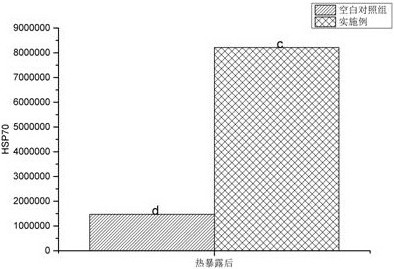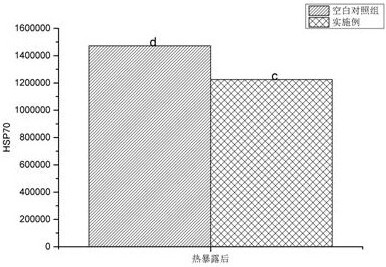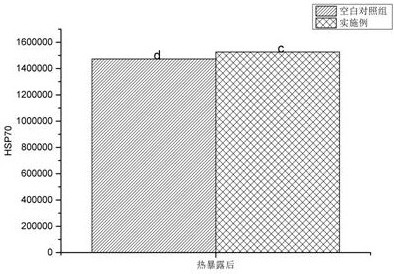Method for judging cold-heat property degree of vegetable food
A plant-based and food-based technology, applied in biochemical equipment and methods, testing food, adding food elements, etc., to achieve the effect of simple operation process, sensitive operation process, and low experimental cost
- Summary
- Abstract
- Description
- Claims
- Application Information
AI Technical Summary
Problems solved by technology
Method used
Image
Examples
Embodiment 1
[0032] (1) Preparation of the culture medium of the sample to be tested (white tea): mash the white tea with water and extract it in boiling water (water extraction method) to obtain water-soluble components, with a final mass fraction of 5% (based on dry weight) was added to the blank medium.
[0033] (2) The unmated female Drosophila flies that had eclosion within 10 h were selected, and after anesthesia, they were randomly divided into 2 groups, 50 in each group, and raised in blank medium.
[0034] (3) After 3 days of culture in the blank medium, the female fruit flies were transferred into the sample medium to be tested and the blank medium for culture for 3 days, and the fruit flies cultured in the blank medium were used as the blank control group. Feeding conditions: temperature 26 ℃ , humidity 50%, light: dark=12h : 12h.
[0035] (4) Transfer the female fruit flies after 3 days of culture into an empty bottle, and perform uniform heat exposure for 2 hours in an artifi...
Embodiment 2
[0041](1) Preparation of test sample (fructose syrup) medium: Add fructose syrup to the blank medium at a final mass fraction of 5%.
[0042] (2) The unmated female Drosophila flies that had eclosion within 10 h were selected, and after anesthesia, they were randomly divided into 2 groups, 50 in each group, and raised in blank medium.
[0043] (3) After 3 days of culture in the blank medium, the female fruit flies were respectively transferred into the sample medium to be tested and the blank medium for 3 days, and the fruit flies cultured in the blank medium were used as the blank control group, (feeding conditions: temperature 26 ℃, humidity 50%, light: dark=12h : 12h).
[0044] (4) Transfer the female fruit flies after 3 days of culture into an empty bottle, and perform uniform heat exposure for 3 hours in an artificial climate box at (36±1)°C.
[0045] (5) Randomly select 20 female Drosophila after heat exposure, fill them with liquid nitrogen, and freeze them at -80 ℃ fo...
Embodiment 3
[0050] (1) Preparation of test sample (glucose) medium: Glucose was added to the blank medium at a final mass fraction of 5%.
[0051] (2) The unmated female Drosophila flies that had eclosion within 10 h were selected, and after anesthesia, they were randomly divided into 2 groups, 50 in each group, and raised in blank medium.
[0052] (3) After 3 days of culture in the blank medium, the female fruit flies were respectively transferred into the sample medium to be tested and the blank medium for 3 days, and the fruit flies cultured in the blank medium were used as the blank control group, (feeding conditions: temperature 26 ℃, humidity 50%, light: dark=12h : 12h).
[0053] (4) Transfer the female fruit flies after 3 days of culture into an empty bottle, and perform uniform heat exposure for 4 hours in an artificial climate box at (36±1)°C.
[0054] (5) Randomly select 20 female Drosophila after heat exposure, fill them with liquid nitrogen, and freeze them at -80 ℃ for the d...
PUM
 Login to View More
Login to View More Abstract
Description
Claims
Application Information
 Login to View More
Login to View More - R&D
- Intellectual Property
- Life Sciences
- Materials
- Tech Scout
- Unparalleled Data Quality
- Higher Quality Content
- 60% Fewer Hallucinations
Browse by: Latest US Patents, China's latest patents, Technical Efficacy Thesaurus, Application Domain, Technology Topic, Popular Technical Reports.
© 2025 PatSnap. All rights reserved.Legal|Privacy policy|Modern Slavery Act Transparency Statement|Sitemap|About US| Contact US: help@patsnap.com



